Non-Isolated DC DC Converters
Our non-isolated regulators offer efficient and reliable voltage regulation for a wide range of industries, including automotive, industrial automation, telecommunications, and more.
With a focus on performance, flexibility, and space-saving designs, our regulators provide precise voltage regulation, advanced control features, and robust protection mechanisms to ensure stable and consistent power output. Whether you require step-down or step-up regulators, adjustable voltage regulators, buck-boost, or point-of-load our product lineup offers a variety of options to suit your specific requirements.
Explore our collection of non-isolated regulators to find the ideal power regulation solution that empowers your systems with enhanced performance and reliability.
| Series | Input Range |
Input Voltage |
Output Voltage |
No. Outputs |
Output Power (W) |
|
|---|---|---|---|---|---|---|
POL16-05T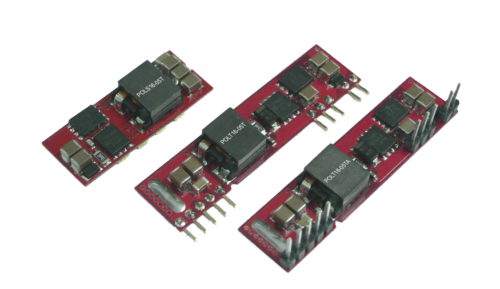 Series Description: The PSAYC series of AC/DC switching power supplies provides 2 watts of output power in a 1.33" x 0.87* x 0.67* encapsulated PCB mountable package. | Input Voltage: 2.4~5.5 | Input Voltage: 5 | Output Voltage: 0.75~3.3 | No. Outputs: S | Output Power (W): 12~52.8 | Get a QuoteDownload Datasheet |
The POL16-05T series of DC/DC open frame power converters offers 16A output current rating in a compact and low profile package. | ||||||
POLT16-12T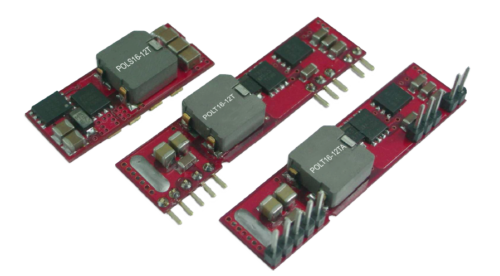 Series Description: The PSAYC series of AC/DC switching power supplies provides 2 watts of output power in a 1.33" x 0.87* x 0.67* encapsulated PCB mountable package. | Input Voltage: 8.3~13.2, 8.3~14 | Input Voltage: 12 | Output Voltage: 0.75~5 | No. Outputs: S | Output Power (W): 12~80 | Get a QuoteDownload Datasheet |
The POLT16-12T series of DC/DC open frame power supplies offers 16A output current rating in a compact size and low profile package. | ||||||
DCLSR01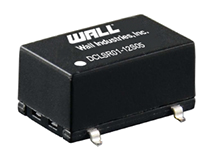 Series Description: The PSAYC series of AC/DC switching power supplies provides 2 watts of output power in a 1.33" x 0.87* x 0.67* encapsulated PCB mountable package. | Input Voltage: 12-36, 15-36, 18-36, 3.0-5.5, 3.8-5.5, 4.6-36, 4.75-36, 6.5-36, 9.0-36 | Input Voltage: 5, 12, 24 | Output Voltage: 1.2, 1.5, 1.8, 2.5, 5, 6.5, 9, 12, 15 | No. Outputs: S | Output Power (W): 15 | Get a QuoteDownload Datasheet |
The DCLSR01 series of DC/DC converters offers up to 15 watts of output power in a compact 0.60” x 0.37” x 0.29” package. | ||||||
DCPSD25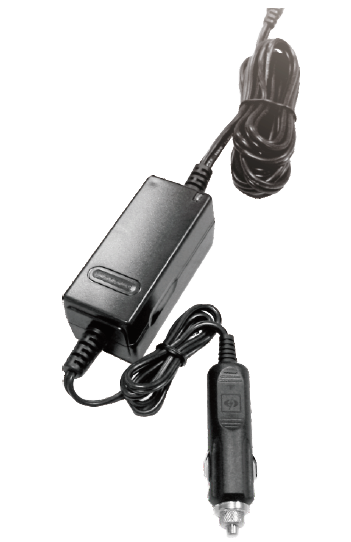 Series Description: The PSAYC series of AC/DC switching power supplies provides 2 watts of output power in a 1.33" x 0.87* x 0.67* encapsulated PCB mountable package. | Input Voltage: 11~26, 11~15 | Input Voltage: 11~26, 11~15 | Output Voltage: 5~6, 6~8, 8~11, 13~16, 16~21, 21~27, 27~33, 33~48 | No. Outputs: S | Output Power (W): 18, 20, 25 | Get a QuoteDownload Datasheet |
The DCPSD25 series of non-isolated DC/DC supplies offers up to 25 watts of output power in a 3.60in x 1.57in x 1.52in compact package. | ||||||
POL30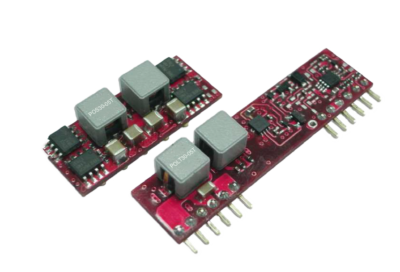 Series Description: The PSAYC series of AC/DC switching power supplies provides 2 watts of output power in a 1.33" x 0.87* x 0.67* encapsulated PCB mountable package. | Input Voltage: 4.5~5.5, 6~14 | Input Voltage: 5, 12 | Output Voltage: 0.8~3.63 | No. Outputs: S | Output Power (W): 24~108.9 | Get a QuoteDownload Datasheet |
The POL30 series of DC/DC non-isolated open frame converters offers up to 30A output current in a compact and low profile package. | ||||||
DCPSD40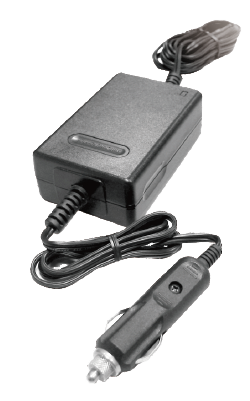 Series Description: The PSAYC series of AC/DC switching power supplies provides 2 watts of output power in a 1.33" x 0.87* x 0.67* encapsulated PCB mountable package. | Input Voltage: 11~26 | Input Voltage: 12 | Output Voltage: 5~6, 6~8, 8~11, 13~16, 16~21, 21~27, 27~33, 33~48 | No. Outputs: S | Output Power (W): 25, 30, 35, 38, 40 | Get a QuoteDownload Datasheet |
The DCPSD40 series of non-isolated DC/DC supplies offers up to 40 watts of output power in a 4.23in x 2.64in x 1.42in compact package. | ||||||
DCPSR2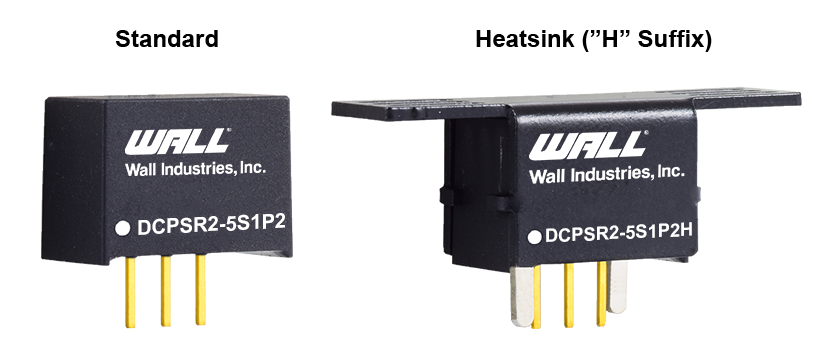 Series Description: The PSAYC series of AC/DC switching power supplies provides 2 watts of output power in a 1.33" x 0.87* x 0.67* encapsulated PCB mountable package. | Input Voltage: 3.0~5.5, 3.8~5.5, 4.6~36, 4.75~36, 6.5~36, 9.0~36, 12~36, 15~36, 18~36 | Input Voltage: 5, 12, 24 | Output Voltage: 1.2, 1.5, 1.8, 2.5, 3.3, 5, 6.5, 9, 12, 15 | No. Outputs: S | Output Power (W): 30 | Get a QuoteDownload Datasheet |
The DCPSR2 series of non-isolated DC/DC converters offers up to 30 watts of output power in an ultra-compact package with an optional heatsink. | ||||||
DCPSD60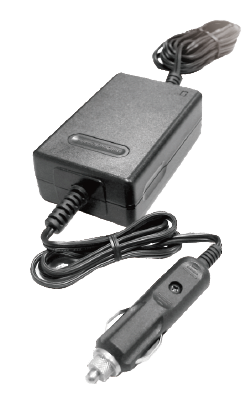 Series Description: The PSAYC series of AC/DC switching power supplies provides 2 watts of output power in a 1.33" x 0.87* x 0.67* encapsulated PCB mountable package. | Input Voltage: 11~15 | Input Voltage: 11~15 | Output Voltage: 18~21, 21~27, 27~33 | No. Outputs: S | Output Power (W): 60 | Get a QuoteDownload Datasheet |
The DCPSD60 series of non-isolated DC/DC supplies offers 60 watts of output power in a 4.23in x 2.64in x 1.42in compact package. | ||||||
What is a non-isolated DC DC converter?
A non-isolated DC DC converter forgoes using a transformer to eliminate the DC path between its input and output. Integrated circuits (ICs) typically serve the same purpose that a transformer would.
When would you use a non-isolated power supply?
Non-isolated power supplies are often used in LED-lighting, appliances and sensor applications.
What is the difference between isolated and non-isolated?
Non-isolated DC DC converters use a single circuit, allowing current to flow from input to output. Isolated DC DC converters, meanwhile, prevent DC current flow between input and output by separating the circuit into two sections.
Do I need a non-isolated DC-DC converter for my industrial application?
Isolation is typically required in an applicaton for safety reasons. If an application doesn’t require isolation, non-isolated converters are available to power equipment, offering a compact size, improved efficiency and cost savings.
What is the main difference between isolated and non-isolated converters?
For isolated DC-DC converters, there is separate ground between input and output stages, which provides enhanced safety when exposed, wheres a non-isolated converter allows direct current flow between the two sides as they share a common ground.
What are the main benefits of using a non-isolated converter?
Non isolated converters utilize fewer components, making them more compact and a lower cost alternative to isolated converters. Furthermore, non-isolated converters typically provide higher efficiency which provides cost-savings over time.
What should I consider when choosing a non isolated converter?
After determining proper input and output specifications, it is also important to consider efficiency, power loss, and electrical noise generated by the converter in order to ensure you are using the proper non-isolated converter for your application.
Get a Quote
Request information for from Wall Industries.
"*" indicates required fields
Custom Solutions
Wall Industries, Inc. offers fully custom power design capabilities. Our team of electrical and mechanical power design engineers will utilize proven design topologies and concepts to create a solution to your power requirements. If you don’t have a specification, Wall’s engineering team will assist you in determining what your requirements are and how best to provide a solution.
Custom Power Supplies